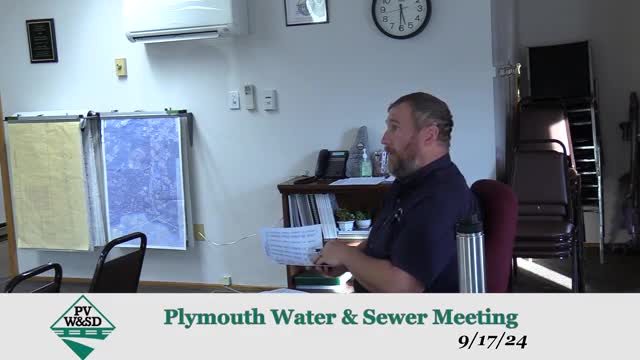New regulations tackle toxic PFAS contamination crisis
September 30, 2024 | Plymouth, Grafton County, New Hampshire
This article was created by AI summarizing key points discussed. AI makes mistakes, so for full details and context, please refer to the video of the full meeting. Please report any errors so we can fix them. Report an error »

In a recent government meeting, officials discussed the increasing challenges surrounding the disposal and regulation of PFAS (per- and polyfluoroalkyl substances), a group of chemicals linked to serious health risks, including cancer and reproductive issues. The conversation highlighted the complexities of tracking and managing these substances, particularly as new regulations are introduced.
One key point raised was the difficulty in proving the source of PFAS contamination, whether it originates from soil or is deposited aerially. This complicates liability issues for facilities handling waste. As regulations tighten, officials noted that the disposal of contaminated materials is becoming more challenging, necessitating a reevaluation of discharge practices into local waterways.
The meeting also addressed the recent approval of testing methods for PFAS by the EPA, which will allow for monitoring under the National Pollutant Discharge Elimination System (NPDES) permit. However, the costs associated with testing—approximately $350 per sample—pose a financial burden on facilities, which may need to budget for this in the coming year.
Officials acknowledged the societal choices contributing to PFAS contamination, as these chemicals are often found in everyday products. Legislative efforts are underway to ban certain PFAS compounds in commercial products, but tracking their use and disposal remains a significant challenge.
The discussion underscored the need for public awareness and education regarding the implications of PFAS, as well as the importance of exploring alternative products and practices to mitigate contamination. As regulations evolve, the burden of compliance and the complexity of managing these hazardous substances continue to grow, prompting calls for more robust advocacy and community engagement.
One key point raised was the difficulty in proving the source of PFAS contamination, whether it originates from soil or is deposited aerially. This complicates liability issues for facilities handling waste. As regulations tighten, officials noted that the disposal of contaminated materials is becoming more challenging, necessitating a reevaluation of discharge practices into local waterways.
The meeting also addressed the recent approval of testing methods for PFAS by the EPA, which will allow for monitoring under the National Pollutant Discharge Elimination System (NPDES) permit. However, the costs associated with testing—approximately $350 per sample—pose a financial burden on facilities, which may need to budget for this in the coming year.
Officials acknowledged the societal choices contributing to PFAS contamination, as these chemicals are often found in everyday products. Legislative efforts are underway to ban certain PFAS compounds in commercial products, but tracking their use and disposal remains a significant challenge.
The discussion underscored the need for public awareness and education regarding the implications of PFAS, as well as the importance of exploring alternative products and practices to mitigate contamination. As regulations evolve, the burden of compliance and the complexity of managing these hazardous substances continue to grow, prompting calls for more robust advocacy and community engagement.
View full meeting
This article is based on a recent meeting—watch the full video and explore the complete transcript for deeper insights into the discussion.
View full meeting
